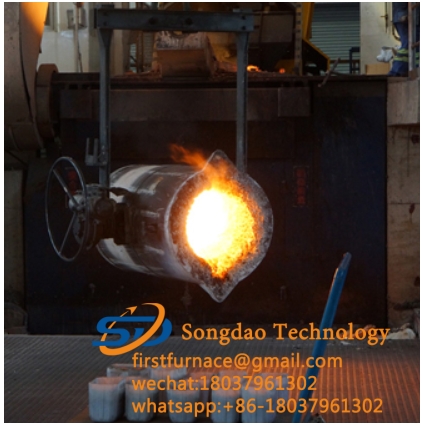- 22
- Feb
Precautions for the operation of coreless induction furnace for conventional foundry
Precautions for the operation of coreless induction furnace for conventional foundry
The following precautions are well-known to melters and foundries, and are common knowledge not only for coreless induction furnaces but also for all metal smelting operations. This is just for general knowledge and does not involve all types of operations. These matters should be explained clearly and appropriately expanded or perfected by a specific operator.

The smelting and casting operations should be limited to personnel with qualification certificates, or personnel qualified in factory training and assessment, or operations under the command of qualified engineering and technical personnel in the factory.
On-site personnel should always wear safety glasses with protective frames, and use special filters when observing high-temperature metals.
4. Personnel working at or near the fireside should wear heat-insulating and fire-resistant overalls. Synthetic chemical fiber (nylon, polyester, etc.) clothing should not be worn near the fireside.
5. The furnace lining should be checked frequently at certain time intervals to prevent “exhaustion”. After cooling, check the furnace lining. When the thickness of the furnace lining (excluding asbestos board) is less than 65mm-80mm after wear, the furnace must be repaired.
6. Adding materials should be careful to avoid “bridges” of materials. The ultra-high temperature of the metal on both sides of the “bridges” will cause the corrosion of the furnace lining to accelerate.
7. The new coreless induction furnace should be made of appropriate materials, suitable for the metal to be smelted, and be completely dried before adding materials for smelting. The material sintering regulations should strictly follow this article.
8. Low-melting materials such as aluminum and zinc should be cautiously added to high-temperature liquids such as steel. If the low melting point additives sink before melting, they will boil violently and cause overflow or even explosion. Be especially careful when adding galvanized tubular charge.
9. The charge should be dry, free of flammable materials, and not excessively rusted or damp. The violent boiling of liquid or combustibles in the charge can cause molten metal to overflow or even explode.
10. Movable quartz crucibles can be used when both metal and coreless induction furnaces are of suitable size. They are not designed for high temperature melting of ferrous metals. The manufacturer’s performance statement should be a guide for the use of the crucible.
11. When the metal is transported into the crucible, the sides and bottom of the crucible must be supported by a bracket. The support must try to prevent the crucible from slipping out during casting.
12. The relevant smelting chemistry knowledge should be understood. For example, chemical reactions such as the violent boiling of carbon can cause equipment damage and personal injury. The temperature of the heating solution should not exceed the required value: If the temperature of the molten iron is too high, the life of the furnace lining will be greatly reduced, because the following reaction will occur in the acid furnace lining: SiO2+2(C) [Si] +2COThis reaction reaches 1500℃ in the molten iron The above proceeded very quickly, and at the same time the composition of the molten iron also changed, the carbon element was burnt out, and the silicon content increased.
13. The area for receiving should maintain a liquid-free volume. Contact of hot metal and liquid can cause a violent explosion and cause personal injury. Other residues can prevent the molten metal from flowing into the overflow tank or ignite a fire.
14. The overflow tank should be ready to receive molten metal at any time when the coreless induction furnace is working. Spills may appear without warning. At the same time, if the coreless induction furnace must be emptied as soon as possible and the barrel (ladle) is not suitable, the coreless induction furnace can be dumped directly into the overflow tank.
15. All personnel who artificially implant organs, joints, plates or the like should stay away from any coreless induction furnace. The magnetic field near the device can induce current on any metal implant. People with cardiac pacemakers are particularly at risk and should stay away from any coreless induction furnace.
